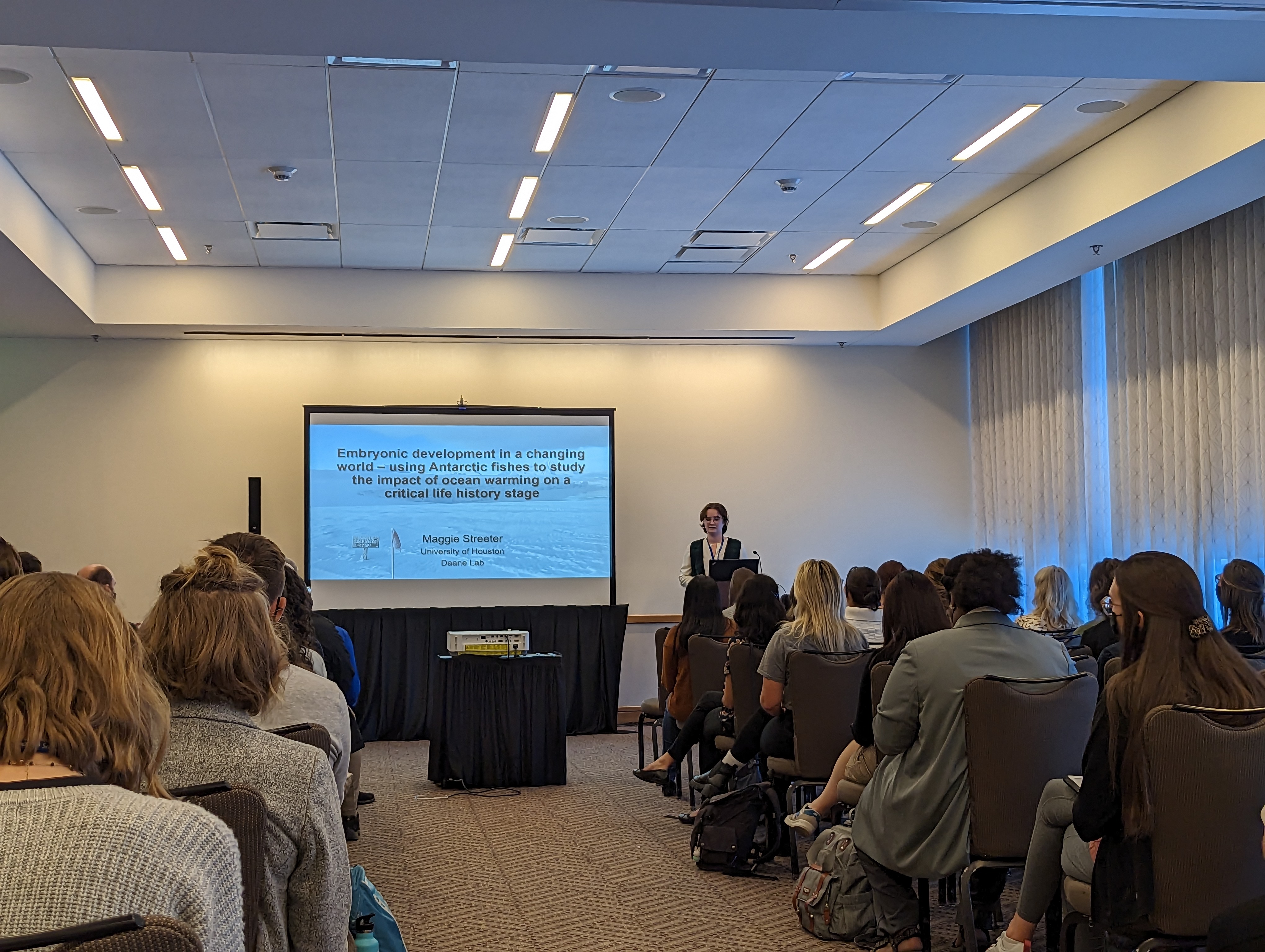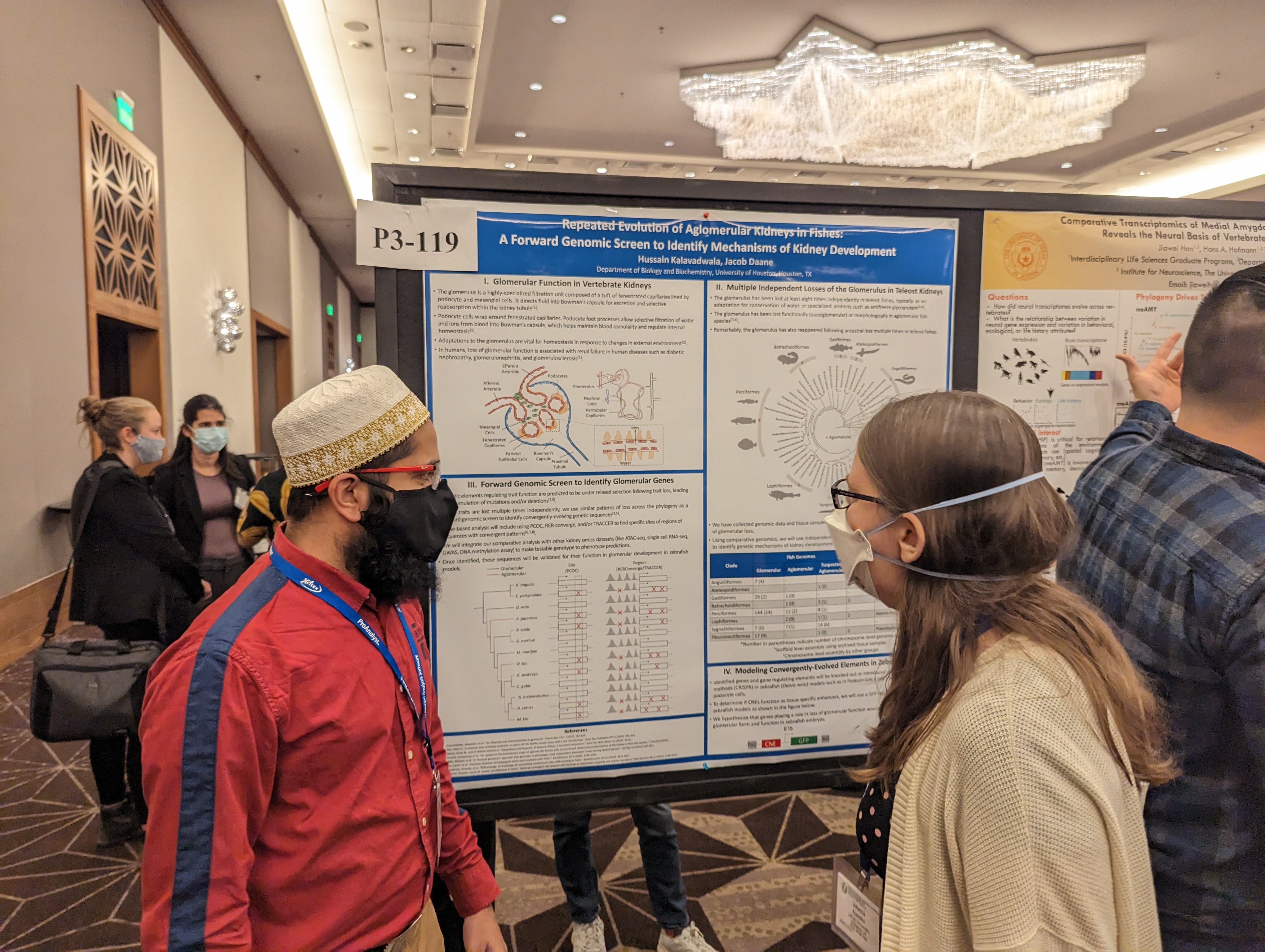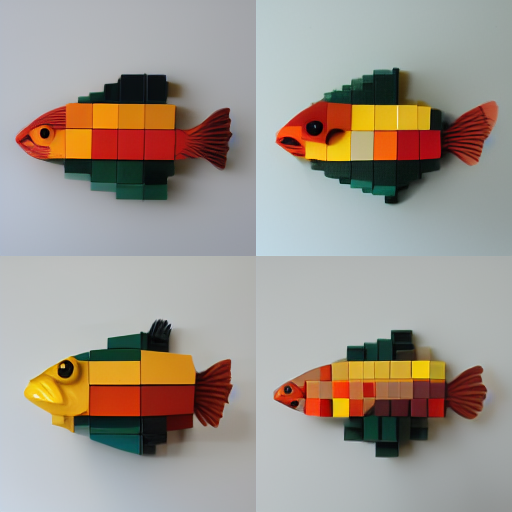Great presentations by the lab at the SICB meeting in Austin TX.


Great presentations by the lab at the SICB meeting in Austin TX.


Congratulations to Olivier Larouche for winning the 2022 Daane Lab AI Art competition!

Building blocks of morphological change “by” Olivier Larouche
Ancient climate change events ~22 million years ago led to the freezing of the Southern Ocean and the local extinction of most fish populations surrounding Antarctica. One clade of fishes, the Antarctic notothenioids, were able to adapt to the increasingly icy conditions and ultimately diversified from a single common ancestor to ~120 species today. These 120 species are so successful that this family represents around 90% of fish biomass off the Antarctic continental shelf!
As a classic example of adaptive radiation in a marine environment, notothenioids are models for understanding adaptive radiations, physiological and biochemical adaptations to extreme environments, and adaptation to climate change. With a surge in genomic and transcriptomic resources for this clade, the past decade has revealed substantial insight into molecular mechanisms of notothenioid adaptation.
In this paper we review some of the insights gained from notothenioid biology in the omics era. We discuss how the notothenioid adaptive radiation is characterized by frequent chromosomal fusions, large-scale TE mobilization, and gene family expansions and contractions that are functionally associated with the physiological stresses of life at subzero temperatures. Unstable karyotypes and dramatic changes to mutation rate in notothenioids distinguish this clade from genetic trends observed in other fish radiations. As observed in other fish species flocks, gene flow may also play an important role in the genetic history of the notothenioids. Future research on the genetic architecture and developmental mechanisms of key traits in notothenioids will help to synthesize the principles and mechanisms of adaptive radiation.
Check it out the review article here: Adaptations and Diversity of Antarctic Fishes: A Genomic Perspective
Excellent review on our recent work in flying fishes by Viviane Callier published today in Quanta Magazine
The story covers our paired comparative genomic and laboratory genetic approaches for addressing questions in evo-devo, simple genetic changes underlying major morphological transitions in evolution and highlights other work by the Harris lab at HMS
New publication out today in Current Biology. This was a collaboration with with the Harris, Lovejoy and Iovine labs where we intersect forward genetics in zebrafish and comparative genomics to identify a role for amino acid transport and potassium channel activity in regulating fin size in fishes. We map the long-mysterious longfin zebrafish mutant to an inversion of chr2 that results in ectopic overexpression of kcnh2a in fins. We also find evidence for convergent molecular evolution in the amino acid transporter lat4a in flying fishes and show that a simple combination of dominant lat4a and kcnh2a alleles is sufficient to replicate the flying fish fin bauplan. Simple genetic mechanisms can have major impacts on fin allometry - this may underlie the large degree of natural variation observed in fin proportions. Check it out the article here: Modulation of bioelectric cues in the evolution of flying fishes or at the Current Biology website.
For epic footage of flying fishes in action, check out this video from BBC
The Daane lab will open January 2022 in the Department of Biology and Biochemistry at the University of Houston. See you then!
New paper from Harris lab providing new approach for detecting convergent evolutionary rate changes in phylogenomic datasets. Check it out the article here: Refining Convergent Rate Analysis with Topology in Mammalian Longevity and Marine Transitions
Jake interviewed in NewScientist commenting on a cool catfish armor study from Nakamura lab. Check it out the article here: New Scientist and the preprint here: bioRxiv